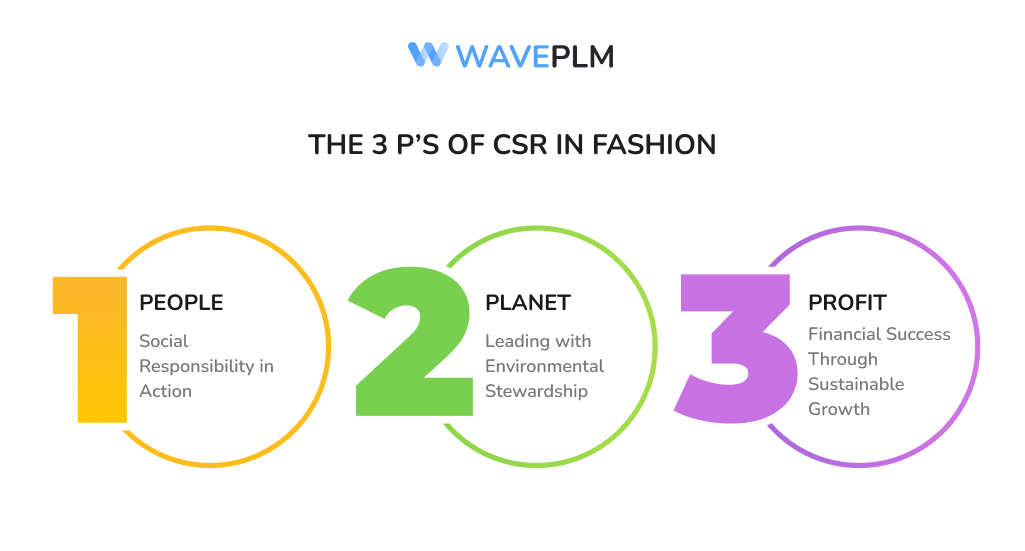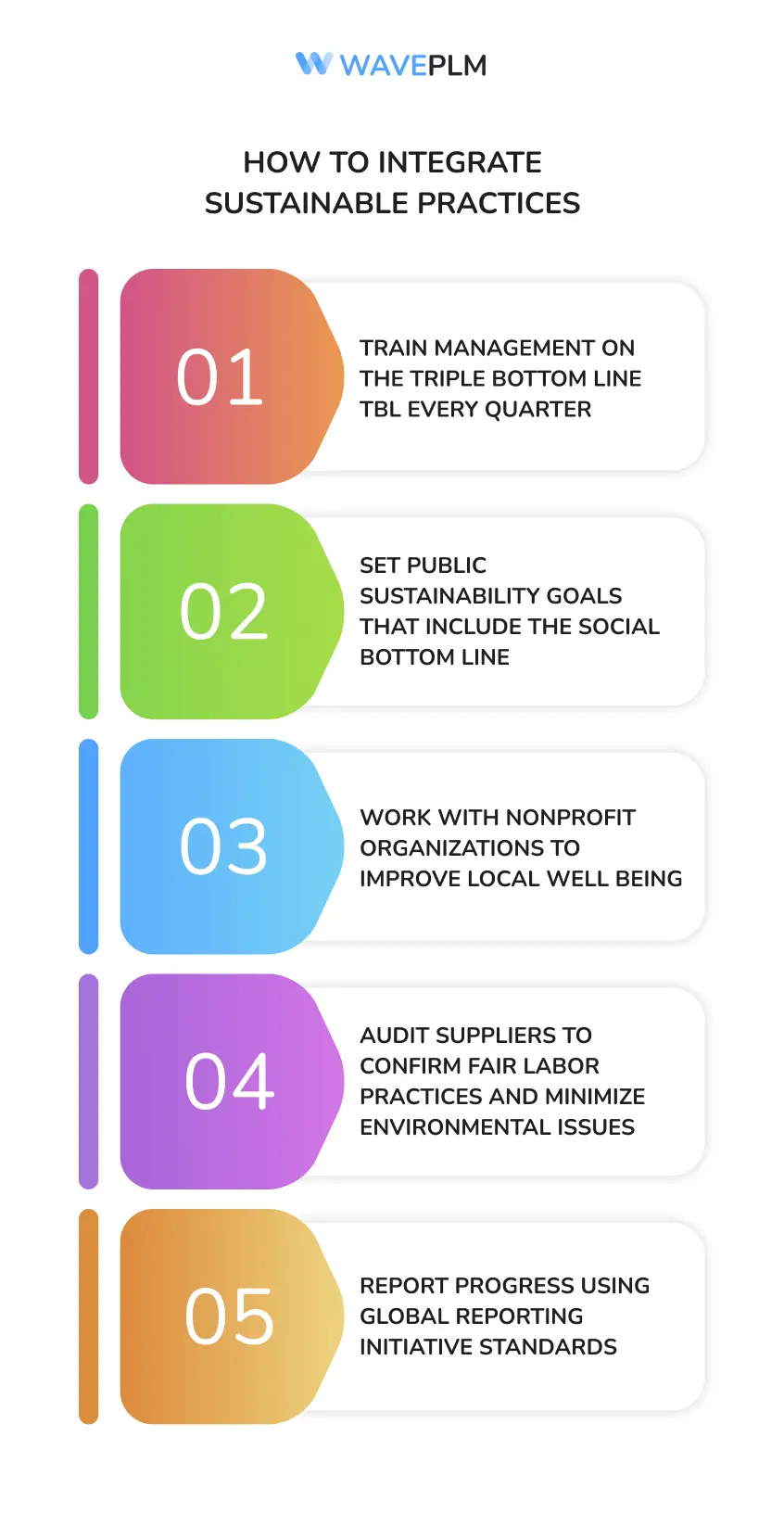
The Triple Bottom Line Concept
The triple bottom line concept reshaped the business world. The idea holds that companies must balance three dimensions of value. These dimensions include social equity, environmental sustainability, and financial performance. Many business leaders describe the model as the triple bottom line framework because it guides sustainable business practices at every level. The concept also appears in Harvard Business Review essays that discuss sustainable business strategies and corporate social responsibility.
Three P’s That Drive Sustainable Success
The triple bottom line stresses three P’s: people, planet, and profit. Industry analysts often call this trio the three bottom line. The people pillar matters most for the social bottom line because it protects workers and communities. The planet pillar covers environmental impact and environmental responsibility. The profit pillar measures the financial bottom line. Together they form the triple bottom line TBL that many business leaders champion.

Why the Social Bottom Line Leads the Trio
Companies thrive when employees thrive. The social bottom line focuses on well being, fair labor, and social and environmental issues that affect communities. Brands with strong social equity often see improved financial performance because loyal workers encourage employee retention and create better products. That positive impact travels through the entire accounting framework and boosts shareholder value.
Ethical Fashion Highlights the People Pillar
Ethical fashion relies on the triple bottom approach to bring human rights to the front. Fair labor practices protect garment workers and minimize environmental impact during production. Brands that measure their social and environmental impact can lower their carbon footprint and energy consumption through green innovation while still achieving economic success. They also build trust with conscious customers who support sustainable development.
Fair Labor Practices Strengthen Financial Performance
Research from Harvard Business School shows that fair labor practices reduce costs linked to turnover and accidents. That creates a direct link between the social bottom line and financial success. Businesses that integrate sustainable practices also gain easier access to capital from investors who value corporate responsibility. The result strengthens both the financial bottom line and the environmental bottom line.
Building Sustainable Business Strategies for People
Many business leaders follow a simple guideline. They review every decision through the lens of the triple bottom line. They ask three questions. Does this action help people? Does it protect the natural environment? Does it improve financial profit? This line approach ensures that every department, from design to logistics, supports sustainability goals and business sustainability.
Measuring Social and Environmental Impact
Numbers drive improvement. The next section lists key metrics that track the social bottom line and environmental performance. Use these measures to guide sustainability initiatives and reduce costs.
Key Metrics Table
|
Metric |
Target |
How It Serves the Triple Bottom Line |
|---|---|---|
|
Living wage ratio |
100% of staff receive living wage |
Supports the social bottom line and encourages employee retention |
|
Lost time injury rate |
Under 1% annually |
Improves well being and lowers profit risks |
|
Volunteer hours |
20 per employee yearly |
Strengthens community ties and corporate social responsibility |
|
Carbon footprint per unit |
Fall 30% by 2027 |
Shows environmental performance progress |
|
Supplier audit score |
95% compliance |
Ensures business partners follow fair labor and environmental protection rules |
How to Integrate Sustainable Practices
Follow these sustainable business practices and reach sustainability measures that matter.
- Train management on the triple bottom line TBL every quarter.
- Set public sustainability goals that include the social bottom line.
- Work with nonprofit organizations to improve local well being.
- Audit suppliers to confirm fair labor practices and minimize environmental issues.
- Report progress using Global Reporting Initiative standards.

Action Plan Template
|
Step |
Action |
Stakeholder |
Timeline |
|
Assess |
Map social and environmental impact across business operations |
Sustainability team |
Month 1 |
|
Plan |
Set targets for the triple bottom line approach |
Executives |
Month 2 |
|
Act |
Launch training and supplier programs |
Department heads |
Month 3–12 |
|
Measure |
Track bottom line metrics with accounting tool |
Finance |
Ongoing |
|
Report |
Publish results in Harvard Business Review style report |
Communications |
Annual |
Case Study: A Brand’s Triple Bottom Approach
A mid‑size fashion label embraced the triple bottom line. Managers improved factory lighting to cut energy consumption, paid living wages, and tracked environmental impact. Within two years, revenue rose 15%, support from business partners grew, and climate change emissions fell 25%. The brand attributes its financial performance to its people pillar and environmental responsibility. This proves that the triple bottom line works.
Role of Business Partners and Nonprofit Organizations
Business partners extend a company’s reach. They influence the triple bottom line because they touch every resource. Companies should choose partners who align with corporate social responsibility goals. Nonprofit organizations can offer expertise in ecological economics, helping firms protect ecological systems for future generations.
Harvard Business Review Insights
Harvard Business Review articles highlight that many business leaders now view the triple bottom line as an accounting framework that guides strategic planning. Authors recommend using sustainability framework models to measure economic impact and social responsibility at the same level as financial performance.
Tools That Track Environmental Impact
Modern PLM software helps fashion brands capture critical data. Dashboards display energy consumption, carbon footprint, and economic indicators that link directly to the triple bottom. Such tools support business strategies that aim to minimize environmental impact while maximizing profits.
Wave PLM, for example, links design sketches, material libraries, and supplier scorecards in one platform. This holistic view lets decision‑makers follow the triple bottom line approach without juggling spreadsheets. Teams can spot risks, plan ethical fashion collections faster, and share progress with stakeholders in a single click.
FAQs about the Triple Bottom Line TBL
What is the triple bottom line concept?
It measures social bottom line, environmental impact, and financial profit together.
What are the 3 P’s of the triple bottom line?
People pillar, planet, profit.
What are the three goals of the triple bottom line?
Improve social equity, protect the natural environment, and boost financial bottom line.
What are the main criteria of the triple bottom line?
Fair labor practices, minimized environmental impact, and strong financial performance.
Quick Glossary
- Bottom line: Final measure of performance.
- Triple bottom: Combined focus on people, planet, profit.
- Social responsibility: Duty to improve well being in communities.
- Environmental sustainability: Practices that protect ecological systems and future generations.
- Corporate social responsibility: Policy that merges ethical business practices with profitability.
Any business writer who studies sustainability cites the triple bottom line often.
Final Thoughts on Future Generations
Companies that lead today will inspire a global movement tomorrow. They will protect future generations and achieve sustainable growth. They will encourage businesses everywhere to use the tbl framework and build positive impact.
References and Further Reading
- Elkington, J. “Cannibals with Forks: the Triple Bottom Line of 21st Century Business.”
- Articles from Harvard Business Review on sustainable business strategies and financial performance.
- Global Reporting Initiative standards for sustainability measures.
Embrace the triple bottom line today. Embed fair labor, ethical fashion, and environmental sustainability into every design. Track your progress, celebrate each win, and share lessons with peers. This commitment will reward your profit goal and the planet at the same time.
Bonus Resources for the Triple Bottom Line Learner
The triple bottom line remains a dynamic field of study. Explore business school case notes on the triple bottom line. Follow webinars that dissect triple bottom line data dashboards. Join mastermind groups that evaluate the triple bottom line across industries. Each session will enrich your triple bottom line understanding and sharpen your triple bottom line strategy skills.





Leave a Reply